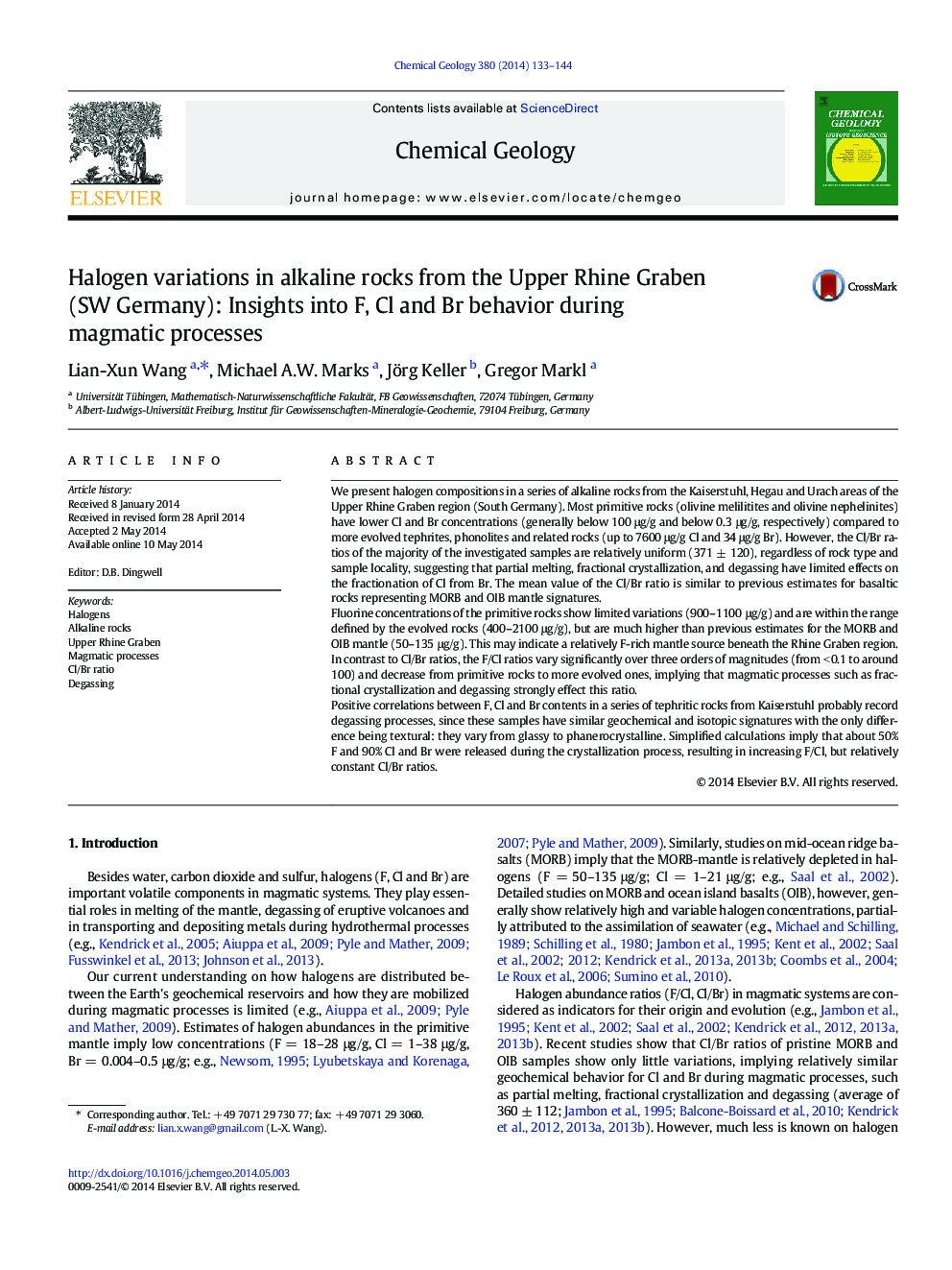| کد مقاله | کد نشریه | سال انتشار | مقاله انگلیسی | نسخه تمام متن |
|---|---|---|---|---|
| 4698736 | 1637592 | 2014 | 12 صفحه PDF | دانلود رایگان |

• Olivine nephelinites and olivine melilitites have high F but low Cl and Br contents.
• Evolved tephrites, phonolites and related rocks show variable halogen contents.
• In magmatic processes, Cl is not strongly fractionated from Br but largely from F.
We present halogen compositions in a series of alkaline rocks from the Kaiserstuhl, Hegau and Urach areas of the Upper Rhine Graben region (South Germany). Most primitive rocks (olivine melilitites and olivine nephelinites) have lower Cl and Br concentrations (generally below 100 μg/g and below 0.3 μg/g, respectively) compared to more evolved tephrites, phonolites and related rocks (up to 7600 μg/g Cl and 34 μg/g Br). However, the Cl/Br ratios of the majority of the investigated samples are relatively uniform (371 ± 120), regardless of rock type and sample locality, suggesting that partial melting, fractional crystallization, and degassing have limited effects on the fractionation of Cl from Br. The mean value of the Cl/Br ratio is similar to previous estimates for basaltic rocks representing MORB and OIB mantle signatures.Fluorine concentrations of the primitive rocks show limited variations (900–1100 μg/g) and are within the range defined by the evolved rocks (400–2100 μg/g), but are much higher than previous estimates for the MORB and OIB mantle (50–135 μg/g). This may indicate a relatively F-rich mantle source beneath the Rhine Graben region. In contrast to Cl/Br ratios, the F/Cl ratios vary significantly over three orders of magnitudes (from < 0.1 to around 100) and decrease from primitive rocks to more evolved ones, implying that magmatic processes such as fractional crystallization and degassing strongly effect this ratio.Positive correlations between F, Cl and Br contents in a series of tephritic rocks from Kaiserstuhl probably record degassing processes, since these samples have similar geochemical and isotopic signatures with the only difference being textural: they vary from glassy to phanerocrystalline. Simplified calculations imply that about 50% F and 90% Cl and Br were released during the crystallization process, resulting in increasing F/Cl, but relatively constant Cl/Br ratios.
Journal: Chemical Geology - Volume 380, 25 July 2014, Pages 133–144